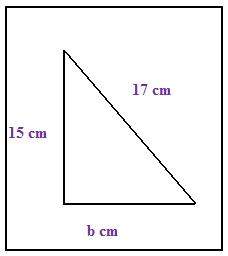Can someone explain pythagoras better than my teacher?
all she said was a2 + b2=c2
all she said was a2 + b2=c2
3 Answers
Pythagoras' Theorem helps to find missing sides in any right angle triangle so long as you know the other two sides.
Explanation:
Pythagoras' Theorem helps to find missing sides in any right angle triangle so long as you know the other two sides. For example;
In this triangle we can see that we are missing the side 'b'.
In the equation:
We need to subsitute the numbers from the triangle into the equation so we work out:
We need to rearrange this equation to figure out, side b.
We then solve this equation to find

I'll use the similar triangle method to prove here, there are a lot more :)
Consider
Consider
Addind these two,
Note that
Therefore, the Pythagoras statement, can be written as,
Read below.
Explanation:
We have a right triangle here:
We also can draw the following:
That looks like a square... but let's prove it.
First, we can see that the side lengths of the green quadrilateral are all equal.
Now, we label like the following:
Using the fact that the angles of a triangle add up to 180 degrees, we see that the missing angle of the triangle, (the one opposite to side
We now have:
Using the fact that a straight line has an angle of 180 degrees, the missing angle of the green quadrilateral is:
You can use the same technique for the other three angles and see that the green quadrilateral is indeed a square.
Therefore, the area of the green square is:
Let's draw another sketch:
You can use the same technique that I used for the previous square to prove that the green quadrilaterals there are squares.
We see that the area of the green squares is:
The large square that contains both the squares and triangles for both cases have the same side length (
Since we have four congruent triangles for each sketch, the leftover areas (the green squares) must be equal to each other.
Therefore:
Which tells that the length of the longest side of a right triangle squared is equal to the sum of the other sides squared.
An example would be
Note that there are hundreds of ways to prove the theorem.



